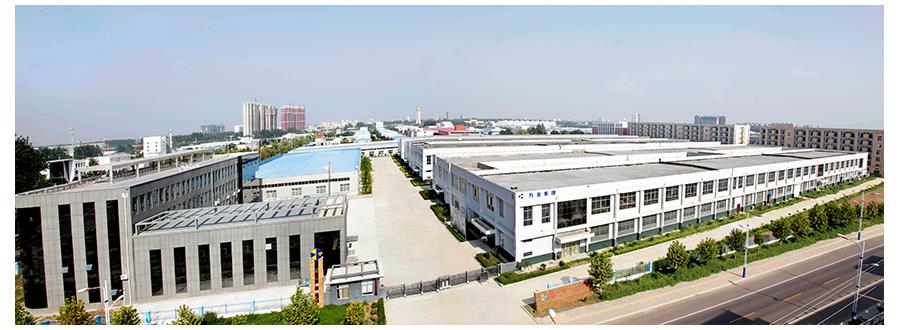Brief Introduction
As an extremely important component of the energy industry, petroleum has achieved considerable development under a good social situation. Various technologies that need to be used in the oil production process have also been greatly improved, among which polycrystalline diamond compacts The drill bit, which is a polycrystalline diamond cutting drill, belongs to a very important technology, which can effectively improve drilling efficiency and reduce costs. This paper briefly analyzes the characteristics of the drilling of polycrystalline diamond cutting drills, analyzes the logging technology of cuttings of polycrystalline diamond cutting bits, and provides reference and reference for those engaged in petroleum industry.
Various technical equipments in the oil industry are continuously improving, and Polycrystalline Diamond Cutting Bit (abbreviated as PDC bit) is one of the very important technologies. It is applied to drilling engineering. With its fast rotation speed and high work efficiency, it can effectively control the cost of drilling and increase economic efficiency.The logging work is a necessary part of the drilling engineering construction, and it needs to collect field data, including rock formation contrast, lithology return, oil and gas layers. Explanations, etc. However, due to the use of PD C drills, it brings about high efficiency, but also has certain defects. In the process of cutting debris cutting, it will make the cuttings fine and reduce the difference between sand and mud boundaries. The logging work is hindered, the recognition rate of lithology is reduced, and the accuracy of profile analysis is limited. Therefore, it is necessary to carry out in-depth research and discussion.
The polycrystalline diamond compact drill bits for polycrystalline diamond compacts are an important breakthrough in US drilling technology in the late 1970s and the late 1970s. They were introduced in China in the late 1980s and used for mass production. Later, it is widely used in drilling engineering in the oil industry. This technology has greatly promoted the development of drilling engineering. Its advantages are good performance and high ROP. Compared with traditional drilling technology, its efficiency is improved by about 40%, the construction life is long, the cost of input is less, and the deviation of wellbore trajectory can be prevented and the offset can be corrected. The mud is easy to carry and clean downhole, which facilitates the later oil production [1].
Second, PDC bit cuttings logging technology
1. Record of drilling time
The low drillability of the formation in the wellbore area can be concentrated in the drilling time, and it can also provide reliable information for stratigraphic lithology. If a tri-cone bit or polycrystalline diamond compact bit is used in the general sand shale profile, usually the sandstone will be drilled faster and the mudstone will be drilled more slowly, if the area has special geology such as depressions, oil and gas fields or areas. In the case of polycrystalline diamond compact drill bits, different conditions may occur during drilling. The following figure shows the changes in the mudstone and sandstone groups of the Shasan Formation under the condition of polycrystalline diamond compact drill bits, including siltstone, Mudstones and muddy siltstones do not show significant fluctuations in their curves, and they are maintained at around 10 m in/m. If the analysis is simply based on the drilling time, the accuracy of the lithology classification is not limited, especially in the sand and mudstone areas where the conditions are relatively special.
Accuracy of late arrival time of rock debris has a great limitation on many aspects of logging work, including the depth of oil and gas layers, the analysis of cuttings profiles, system depth errors, etc., as well as the accurate location of cuttings profiles. Direct decision effect. When using polycrystalline diamond compact drill bits for drilling, it is necessary to accurately measure the delay time of rock debris, remove the rock sample, and then estimate, correct, and approve the late arrival time of the cutting debris according to the state of the return of the flagstone lithology. Guarantee the accuracy of the late arrival time and increase the accuracy of logging information.
Fluorescent logging and gas logging
In the detection of hydrocarbon formations in the formation, the more commonly used method is fluorescence logging. Logging crews generally use three different methods to analyze the results, including drip, wet, and dry exposures, with fluorescent wet and dry exposures showing good levels of hydrocarbon-bearing formations. However, due to the small particles of some formation debris, the results of the two methods should be comprehensively analyzed to improve the accuracy of the judgment. The following figure shows the effect of fluorescent logging.
High drilling speed, compared with traditional drilling technology, its efficiency increased by about 40%, long construction life, less investment costs, and can prevent well track trajectory deviation, correct migration, easy to carry mud, bottom hole cleaning To facilitate later oil production [1].
Second, PDC bit cuttings logging technology
1. Record of drilling time
The low drillability of the formation in the wellbore area can be concentrated in the drilling time, and it can also provide reliable information for stratigraphic lithology. If a tri-cone bit or polycrystalline diamond compact bit is used in the general sand shale profile, usually the sandstone will be drilled faster and the mudstone will be drilled more slowly, if the area has more special geology such as depressions, oil and gas fields or areas. In the case of polycrystalline diamond compact drill bits, different conditions may occur during drilling. The following figure shows the changes in the mudstone and sandstone groups of the Shasan Formation under the condition of polycrystalline diamond compact drill bits, including siltstone, Mudstones and muddy siltstones do not show significant fluctuations in their curves, and they are maintained at around 10 m in/m. If the analysis is simply based on the drilling time, the accuracy of the lithology classification is not limited, especially in the sand and mudstone areas where the conditions are relatively special.
Accuracy of late arrival time of rock debris has a great limitation on many aspects of logging work, including the depth of oil and gas layers, the analysis of cuttings profiles, system depth errors, etc., as well as the accurate location of cuttings profiles. Direct decision effect. When using polycrystalline diamond compact drill bits for drilling, it is necessary to accurately measure the delay time of rock debris, remove the rock sample, and then estimate, correct and approve the late arrival time of the cutting debris according to the state of the return of the flagstone lithology. Guarantee the accuracy of the late arrival time and increase the accuracy of logging information.
Fluorescent logging and gas logging
In the detection of hydrocarbon formations in the formation, the more commonly used method is fluorescence logging. Logging crews generally use three different methods to analyze the results, including drip, wet, and dry exposures, with fluorescent wet and dry exposures showing good levels of hydrocarbon-bearing formations. However, due to the small particles of some formation debris, the results of the two methods should be comprehensively analyzed to improve the accuracy of the judgment. The following figure shows the effect of fluorescent logging.
Fig. 2 Comparison of two kinds of lithologic fluorescent logging results
From the figure, it can be observed that the cementation of dense sandstone clusters is more clear than that of cementation, which is looser and shows a single small sandstone. The use of polycrystalline diamond compact drill bit drilling, after fracture of the rock body, the characteristics of sandstone oil and gas display can not truly reflect its lithology.
Gas logging is also a kind of logging method, which can be used to judge the conditions of oil and gas more intuitively. That is, the total gas measurement value will increase with the increase of oil and gas content, and the absolute value of each component will also continue to increase. improve.
Reasonable selection of rock cuttings and cleaning methods
In the process of determining the lithology, geological logging personnel are mainly based on rock debris, which is also one of the basic conditions for other logging methods. It is an important task to remove it from the bottom of the well. After drilling with polycrystalline diamond compact drill bits, the cuttings are finely crushed and appear powdery. If the cleaning times are too few, the rock debris will be mixed with more mud, which will cause greater obstacles to the identification and judgment of lithology. If too many cleanings are performed, a large amount of cuttings will be lost and it will be impossible to obtain enough samples for judgment. If the logging conditions are limited, when the rock cuttings are washed, the rock sample pots can be allowed to stand still for a period of time. After the fine rock debris is completely precipitated, the water can be carefully poured out, which effectively avoids the large amount of cuttings. loss. When using the polycrystalline diamond compact drill bit to drill, due to its fast drilling speed, it may not be able to collect sand in time, resulting in incomplete collection of cuttings data, and the use of the equipment can completely avoid the above problems and improve the sand collection. Accuracy.
to sum up
The application of PDC bit technology in oil fields has the advantages of fast drilling speed and good quality, which can effectively improve drilling efficiency, reduce costs, and bring good economic benefits. However, this type of characteristics also brings a greater impact on logging. difficult. This article only analyzes the debris logging technology of polycrystalline diamond compact bits from a general perspective. In practical production, the technicians are required to comprehensively analyze the drillability of the PD C drill bit to the formation according to various conditions of the oil field. It can effectively improve the accuracy of lithologic division and reasonably select drill bits that can be adapted to actual drilling projects. It can also improve the drilling efficiency and at the same time ensure the smooth progress of logging work.
Related Products












